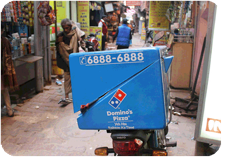With a consumer pool of more than one billion people, India has become the next big expansion destination for companies around the world. While some businesses are still working the bugs out of their strategies for the subcontinent, other operations have hit the ground running and quickly grabbed up market share. Domino’s, for instance, now sells more pizza in India than anywhere else besides the U.S. thanks to its savvy combination of local and Western tastes. On the other hand, Continue reading








